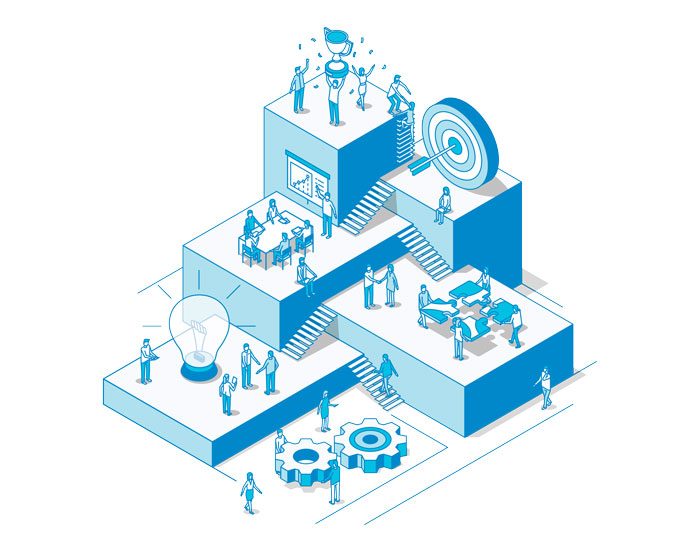Workforce development is not a new topic in the ag equipment industry, but it’s becoming more relevant every year. That’s according to Michael Piercy, vice president of dealer development at the North American Equipment Dealers Assn. (NAEDA).
“Based on the results of our Workforce Development survey, you will see that it’s not only relevant but is also a primary concern for many dealers,” he says. “As we look across our dealer channels, we see because of consolidation and growth, retirement, the evolution of the business, new customer demands and a variety of other things, having the right people doing the right job is vital to our success. And I would go further and say it’s not just having the right person doing the right job. It’s also making sure the right person has access to the right training and development opportunities to do the job right.”
Now more than ever, Piercy says dealers are in a situation that calls for rethinking and changing the way they approach workforce development vs. the old mentality of “hoping that if we do what we’ve always done, we’ll get something different than what we’ve always got.”
Things are looking up at the moment, however, according to the NAEDA 2022 Workforce Study. In this year’s survey, dealer executives were more confident than they were last year. The percentage of CEOs feeling good about their staff bench strength more than doubled. Additionally, the percentage of CEOs with an immediate hiring need dropped in all managing categories year-over-year. Though long-term hiring needs are still high and dealers’ training habits could use improvement, their immediate hiring situation is improved vs. one year ago.
One area where Piercy believes dealers could improve is recruiting talent from outside the industry to help with staffing needs.
Dealer Takeaways
- Dealers need their staff to be trained in recruiting employees/workforce development.
- Service managers are in high demand — both short and long-term needs.
- There is increasing demand for store/general managers compared to the 2021 survey.
- Dealer training dollars continue to be used to meet manufacturer requirements rather than what dealers need in their business.
- Only 16% of respondents stated they were doing enough to develop their own people.
“This industry tends to be somewhat incestuous instead of bringing new people into the industry,” he says. “It seems like in order to solve our issues with employee numbers, it’s most commonly dealt with by taking someone from a dealer down the road. That’s not always the wrong thing to do, that’s the nature of the beast. But we’ve got to figure out a way to bring more people back into the industry so we’re not just picking each other off all the time.”
NAEDA conducted the survey of dealership CEOs from November to December 2022. The results are based on 74 responses representing 350 stores, with 63.5% being from the U.S. and 36.5% from Canada. Over half of respondents (52) had 1-4 locations, followed by 5-9 locations (23), 10-14 locations (5) and 15+ locations (8). By brand, 12.2% were John Deere dealers, 15.9% were New Holland, 19.6% were Case IH, 16.8% were Kubota, 16.8% were AGCO and 18.7% responded with “other.”
Is Your Bench Strong Enough?
The 2022 study saw dealer CEOs feeling better about their development vs. one year ago. The percentage of dealers saying they feel confident in their bench strength rose from 28% last year, while the percentage saying they did not feel confident fell from 52%. At the same time, 48% of CEOs felt they were not doing enough to develop their people.
Dealer Comments
“We don’t do a good enough job of making sure our core values become a part of each employee’s day. We also don’t do a good enough job of holding people accountable including non-performers on our management team.”
Where is the Biggest Immediate Need?
Over 25% of dealers said they had an immediate need for a service manager, which was the most needed position in this year’s report but was down from 61% needing a service manager this time last year. Similarly dealers’ second-most needed position — parts manager at 16% — was down from 34% in the 2021 report. Overall, each role saw a decline in the percentage of dealers with immediate needs to fill that position.
Dealer Comments
“Our parts and service managers are typically parts staff and service technicians who were moved up into management with little training on how to manage people and performance.”
“Dealers resorting to head hunting for employees from other dealers needs to be addressed and stopped. The labor shortage will not be resolved by head hunting.”
Long-Term Needs
Dealers’ long-term needs for service managers were greater this year than last. At the moment, 66% of dealer executives say they’ll need a service manager in 3-5 years, up from 60% who said the same last year. The 3 other manager positions with a growing percentage of dealers needing them were precision ag manager at 30% (vs. 22% last year), aftermarket manager at 30% (up from 21% last year) and HR manager at 20% (vs. 11%).
Dealer Comments
“Everything is changing and will continue to at warp speed. We need to know who we are going to be doing business with in 2 years before we can grow into the next 5 years.”
“Currently, we are working away from being a strongly task-oriented organization to a more balanced organization where developing people is the key to growth and success. Leadership just changed at the top, which is allowing us to head in that direction.”
Want to learn More?
Click here to watch the full webinar!
Contact Michael Piercy or John Schemiser for more information on obtaining survey data as well as breakouts by individual lines.
What Skills Do Managers Need the Most Help With?
CEOs were asked to indicate the degree to which their managers needed training, broken out by technical and people skills. The most commonly selected technical skill was inter-departmental training at 64%, followed by wholegoods department training. The least common was financial training, though this was still considered important by half of all surveyed dealers. High performing work teams was the most selected people skill dealer executives agreed their managers need training in at 66%, followed by retaining talent at 65%. The least agreed upon people skill training was in the aftermarket department at 34%.
Dealer Comments
“Most dealer organizations know enough about their businesses to teach operational and financial aspects of the business, but they don’t even know where to start when it comes to intentionally growing and developing people to effectively lead others.”
“I feel we have the technical training but could use more training in dealing with the public and our customers — training that is geared to our schedule and our needs. Parts, service and wholegoods would all benefit from short specific courses that could be offered according to our seasonal schedule.”
Skill Development Spending
When asked what percentage of their training dollars went to which sources, manufacturer training was the most common source at 43%. Independent training and consulting firms was the least common at 17%. Dealer CEOs said around 76% of their training dollars go toward technical training, with the other 26% going toward people skill training.
Dealer Comments
“Leadership training has not been done in the past, so we are using an outside consultant to do some customized training — based on our individual needs. I’ve been to multi-dealer training before and typically find it watered down to the lowest common denominator, so I prefer something customized if possible.”
“We are constantly using in-house and outside training resources. There is never not a need for more training. It’s just a matter of how much you can fit into your schedule and budget while prioritizing servicing your customers. We have recently started developing our own in-house leadership program for non-management employees with great success. This will be one of many tools we’ll continue to develop alongside our external training programs.”
Self Check: How Are You Doing?
CEOs were asked if they were doing enough to develop people to step into senior/mid-level management roles. Some 38% said they thought they were, up from 16% who said the same last year.
Dealer Comments Included:
“It sometimes feels like our CEO is too far removed from the day-to-day efforts the rest of our management team is dealing with when it comes to co-managers and employees to understand what our frustrations are.” “In order to take our organization to the next level, we need to invest in trainings that are both beneficial to the employee and the employer. We have good thoughts but need better follow through.”





![[Technology Corner] Helping Your Customers Determine Which Technology is Right for Them](https://www.precisionfarmingdealer.com/ext/resources/2025/03/26/Helping-Your-Customers-Determine-Which-Technology-is-Right-for-Them.png?height=290&t=1743084621&width=400)


